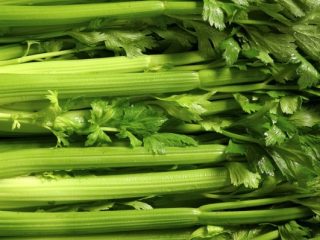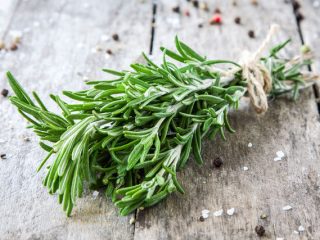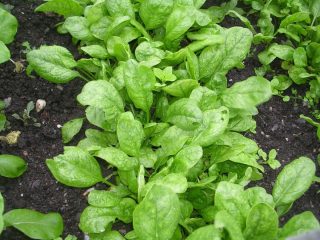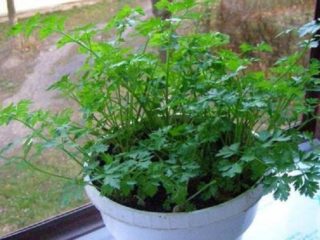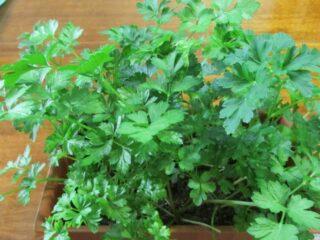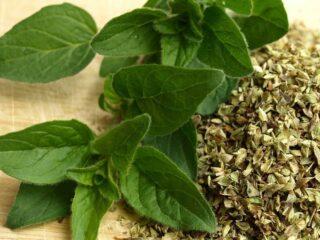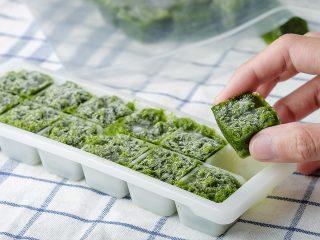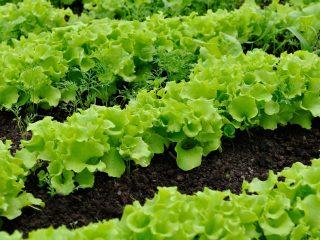Content
Greens are one of the elements of a healthy diet. The product is often underestimated, although it has many useful properties. The younger the sprout, the more vitamins it contains. Therefore, the crop is grown at home so that it is always available. Mustard microgreens are easy to germinate; even a beginner can do the job. In order not to waste money on a purchase, you should analyze the planting technology and care rules.
Description of mustard microgreens
The fashion for a healthy lifestyle came to Russia from the West. Along with this, the tradition of growing mustard microgreens appeared. Beginning gardeners confuse it with simple sprouts, but the products differ in many ways.

Microgreens are grown in pots or plastic containers, and dense planting is practiced - the plant does not suffer from this
Microgreens can be planted both in open ground and at home. Only the foliage and part of the stems are suitable for food. It is in them that the beneficial substances are concentrated. During the growing process, it is important not to miss the moment of leaf formation. The first foliage is the most valuable.
White mustard microgreens benefit the entire body. The composition contains microelements, vitamins, and fiber.As the crop grows, it loses these substances, the leaves and stems become coarser and lose juice.
The plant does not tolerate processing or long-term storage. This is the only drawback that has to be taken into account. Mature sprouts are not as tasty as young ones.
Mustard microgreens are the perfect condiment. In addition to the aroma, it helps to cope with certain ailments, as well as prevent the spread of diseases.
Mustard microgreen flavor
The sprouts have a pleasant mustard flavor. They refresh the mouth, are moderately spicy and piquant. Gourmets compare them with ordinary mustard, radishes, and horseradish. Unlike other “seasoning” plants, microgreens have a pleasant tang.
The product goes well with vegetables, such as cucumbers, potatoes, tomatoes. It must be remembered that strong flavors are present in fresh seasoning.
The benefits and harms of mustard microgreens for the body
The plant is eaten in Europe, the USA, and Asia. Russian culinary specialists do not ignore it either. This interest is associated with an abundance of vitamins and microelements, as well as a minimal amount of calories. Young mustard is great for a healthy diet.
Mustard microgreens are useful because they relieve sore throat during coughing. The herb strengthens the walls of blood vessels and the immune system. During the research, it was revealed that the plant reduces stress levels and stabilizes blood pressure.

Gardeners advise purchasing microgreens in 50 g packages; large packages contain few seeds, and the purchase turns out to be unprofitable
The seasoning speeds up metabolic processes and removes unnecessary substances. This helps in losing weight. The microgreens of the plant have a relaxing effect, relieve apathy, and normalize sleep. The spicy supplement fights internal parasites and improves hormonal levels.
Mustard microgreens contain vitamins A, C and B9, B6, B5, B2, B1. The herb contains minerals - magnesium, selenium, zinc and calcium. Mustard contains fatty acids in small quantities. The foliage is filled with plant fiber, a fiber that is essential for maintaining healthy digestion. Mustard oils are present.
Fresh seasoning produces an anti-inflammatory effect. The antioxidants contained in the composition cope with colds, fight viruses and bacteria. Regular use of the herb leads to overall health of the body and an increase in the number of leukocytes.

In Russia, there are several farms for growing mustard microgreens - the average area of the premises ranges from 50 to 80 square meters. m
Due to its pungent taste, the plant is not recommended to be added to the diet of people suffering from gastritis and intestinal ulcers. Greens are contraindicated for consumption in case of individual intolerance. Some components may cause an allergic reaction. In this case, the greens can be harmful. Symptoms of intolerance include itching, redness, rash, and swelling.
Doctors do not recommend eating mustard microgreens on an empty stomach. This can cause irritation of the mucous membrane. If you have pain in the abdominal cavity, you should discard the product.In some cases, you need to rinse your stomach and call an ambulance. The herb should not be consumed in large quantities. The healing effect is achieved when added to salads and dishes. Therefore, you should not eat kilograms of greens.

Mustard microgreens should be stored in the refrigerator for no more than three days, otherwise the plant will lose its beneficial properties.
How to Plant Mustard Microgreens
Planting a plant is simple - it does not require any unique soil. Any soil that contains river sand and peat is suitable. It must be taken into account that young shoots are not able to break through the dense layer of earth. It is good if the soil is loose.
If the seeds are located outdoors, the area should be treated with disinfectants. Sprouting mustard microgreens is easier to do at home. The plant will be warm, and damage from pests and diseases will be minimal. However, the soil still needs to be calcined in the oven.
After cooling, the earthen ball is moistened by airborne droplets. A spray bottle will help with this, it will evenly distribute the moisture so that all the sprouts have enough of it. Then scatter mustard seeds, cover lightly with soil, water, and place a bottle on top. The pot is put in a dark place. After the mustard seeds germinate, it can be placed on the windowsill.

The cost of packaging varies - mustard microgreens can be purchased for 30, 60, 100, 150 rubles.
Some gardeners practice a different planting method. To do this, use a container with sides of about 5-8 cm. In addition to plastic, the use of glassware and ceramics is allowed.Place paper towels or mineral wool on the bottom, moisten and distribute the planting material. Seeds should not float in liquid. The pot is kept in a warm place, covered with a cloth from light. After germination, place in the sun.
Features of care
Mustard microgreens are easy to care for. To grow, it is enough to maintain a certain humidity and air temperature. In this case, the grass can be in the room or outside. If a gardener decides to start breeding professionally, he should purchase special equipment suitable for caring for large areas.
The plant is watered frequently, but the stems should not float in the water. Moisturize with a spray bottle up to three times a day. A light watering can may be used. In the latter case, water twice a day. Mustard microgreens themselves will “tell” how much moisture it needs. If the shoots remain juicy, watering has been done correctly.
How long does mustard microgreen grow?
The sprouts develop quite quickly. They can be eaten after the formation of two leaves. This usually takes about a week. The more favorable the conditions, the earlier you can start collecting.

Some types of mustard microgreens differ in germination time: for some, five days are enough, for others – 30 days.
The greens are not pulled out by hand, but cut with scissors, leaving 10-15 mm from the stem. If it is in the ground, cut it off carefully so that the mustard microgreens do not get dirty in the ground. If necessary, the grass is washed in clean water and placed in a colander. The plant is then dried on a towel and eaten.
How to use
The culture stimulates appetite, so it can serve as a light snack. Microgreens are most often used as a seasoning. Young mustard has a characteristic taste reminiscent of other spicy vegetables, but it is more delicate.
Gourmets recommend using sprouts with meat dishes. Mustard microgreens go perfectly with beef and pleasantly refresh the mouth. In Asian countries, greens are added as an additive to sushi and rolls. A common use for mustard is as a salad dressing.

Mustard microgreens are not grown up to 6 cm - they are cut off before the leaves and shoots become lignified
Mustard grass is suitable for potato and mushroom soup. It can be the basis for other interesting seasonings, such as pesto. Cooks decorate cocktails, burgers and smoothies with microgreens.
Conclusion
Mustard microgreens are a tasty and healthy product. It is widely used in cooking. Due to its low calorie content, the herb is popular among women. It contains vitamins B, A and C, a lot of calcium and other minerals. Any beginner can handle growing mustard greens.
